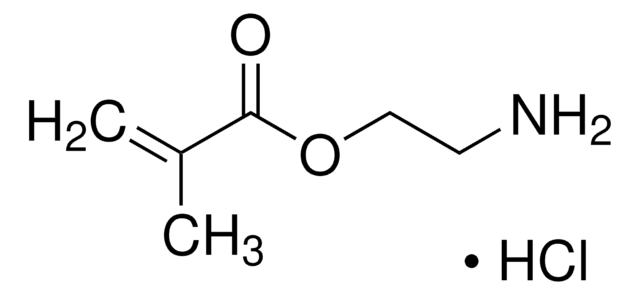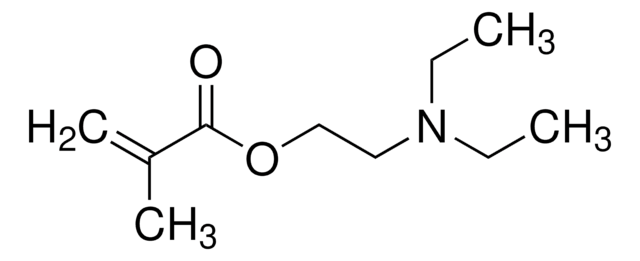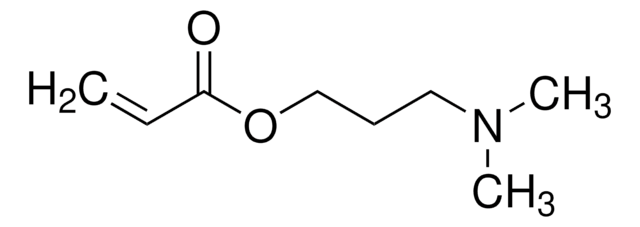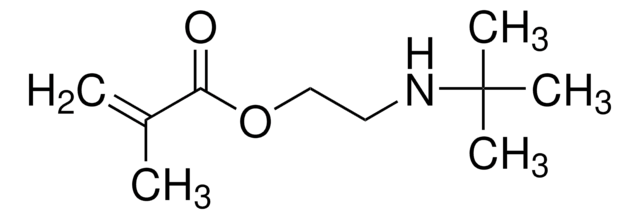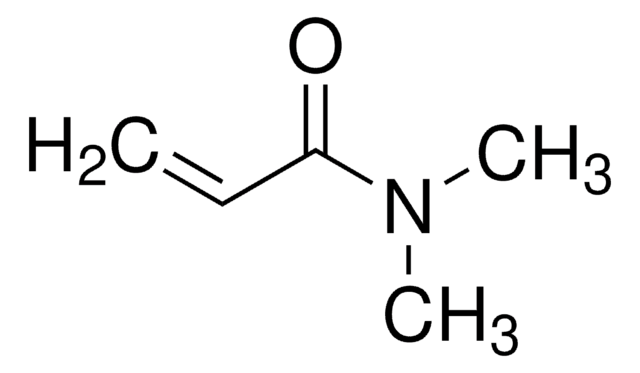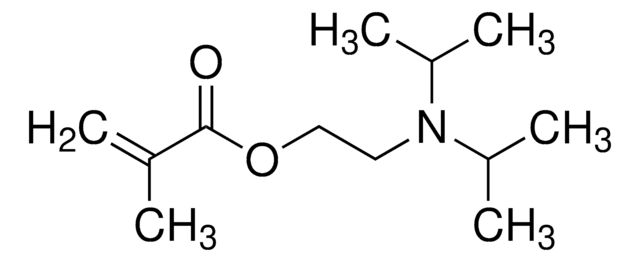推荐产品
质量水平
描述
contains: ~650ppm MEHQ as inhibitor
方案
99%
表单
viscous liquid
折射率
n20/D 1.479 (lit.)
沸点
134 °C/2 mmHg (lit.)
密度
0.94 g/mL at 25 °C (lit.)
SMILES字符串
CN(C)CCCNC(=O)C(C)=C
InChI
1S/C9H18N2O/c1-8(2)9(12)10-6-5-7-11(3)4/h1,5-7H2,2-4H3,(H,10,12)
InChI key
GDFCSMCGLZFNFY-UHFFFAOYSA-N
一般描述
N-[3-(二甲氨基)丙基]甲基丙烯酰胺(DMAPMA) 是一种水溶性甲基丙烯酰胺单体。它是高活性的,可以进行自由基聚合和交联反应。该 (-N(CH3)2)的存在使所得聚合物具有pH 响应性和亲水性。这种多功能 单体可用于药物输送系统、基因输送、反应材料、 生物相容性涂层、粘合剂和生物医学工程。
应用
N-[3-(二甲基胺)丙基]甲基丙烯酰胺可用于:
- 作为单体合成自愈pH应P(DMAPMA-stat-DAA)水凝胶,用于药物递送应用。
- 作为一种阳离子单体,由于其能够与核酸复合并促进其在细胞内的传递而成为基因传递载体。
- 制备用于3D打印的氧化铁纳米颗粒配方。这些铁墨水用于打印磁性设备,用于生物成像的MRI造影剂和靶向药物输送系统。
- 制备一种无毒的微藻合成絮凝剂。
- Glucose-containing diblock polycations exhibit molecular weight, charge, and cell-type dependence for pDNA delivery.: This study investigates the use of glucose-containing diblock polycations, including N-[3-(Dimethylamino)propyl]methacrylamide, in pDNA delivery systems. The research demonstrates that the efficiency of pDNA delivery is influenced by the molecular weight and charge of the polycations, as well as the type of cell used. This highlights the potential for tailored gene delivery applications in different cell types, emphasizing the role of N-[3-(Dimethylamino)propyl]methacrylamide in creating biocompatible and effective delivery vectors (Wu et al., 2014).
警示用语:
Danger
危险声明
危险分类
Eye Dam. 1 - Skin Irrit. 2 - Skin Sens. 1
储存分类代码
10 - Combustible liquids
WGK
WGK 1
闪点(°F)
264.2 °F - closed cup
闪点(°C)
129 °C - closed cup
个人防护装备
Eyeshields, Gloves, type ABEK (EN14387) respirator filter
John E Blume et al.
Nature communications, 11(1), 3662-3662 (2020-07-24)
Large-scale, unbiased proteomics studies are constrained by the complexity of the plasma proteome. Here we report a highly parallel protein quantitation platform integrating nanoparticle (NP) protein coronas with liquid chromatography-mass spectrometry for efficient proteomic profiling. A protein corona is a
Kathryn L Morrissey et al.
Journal of colloid and interface science, 567, 316-327 (2020-02-18)
Flocculation performance using polyelectrolytes is influenced by critical design parameters including molecular weight, amount and sign of the ionic charge, and polymer architecture. It is expected that systematic variation of these characteristics will impact not only flocculation efficiency (FE) achieved
Merve Yaşar et al.
Journal of biomaterials science. Polymer edition, 31(16), 2044-2059 (2020-07-10)
The fabrication of molecularly imprinted nanoparticles (MIP-NPs) specific for myoglobin by using thiol-ene photopolymerization in miniemulsion was described. Allyl derivatives of phenylalanine as a functional monomer was synthesized and copolymerized with acrylic monomers via miniemulsion polymerization to produce NIP-NPs with
我们的科学家团队拥有各种研究领域经验,包括生命科学、材料科学、化学合成、色谱、分析及许多其他领域.
联系技术服务部门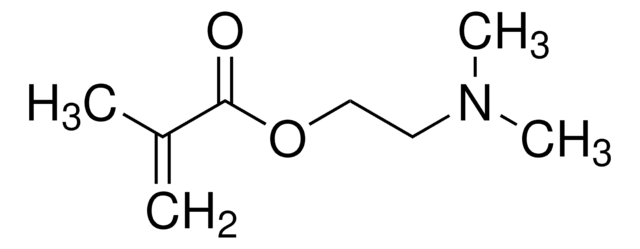

![[2-(甲基丙烯酰氧基)乙基] 三甲基氯化铵 溶液 75 wt. % in H2O](/deepweb/assets/sigmaaldrich/product/structures/316/612/66b0f4cf-d060-427d-b4f5-e8fab3e5cffe/640/66b0f4cf-d060-427d-b4f5-e8fab3e5cffe.png)
